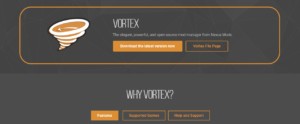How to Start a SaaS Company Successfully?
- 1 Here are Some of the Most Successful SaaS Companies Renowned Worldwide:
- 1.1 Gmail:
- 1.2 Netflix:
- 1.3 Zoom:
- 1.4 Zoho:
- 1.5 Grammarly:
- 1.6 Step-1: Develop the Idea with a Detailed & Dedicated Research
- 1.7 Step-2: Analyze Suitable Monetization Strategies
- 1.8 Step-3: Develop a Minimum Viable Product (MVP)
- 1.9 Step-4: Create Brand Value with a Suitable Marketing Strategy
- 1.10 Final Step: Keep Updating & Upgrading
Software as a service (SaaS) has long been considered the holy grail of small business startups, but many entrepreneurs make costly mistakes when starting their own SaaS companies. In fact, out of the thousands of entrepreneurs who start their businesses each year, only about 15% become successful.
The most powerful IT SaaS companies marketing strategies often focus on automation and ROI. When a customer signs up for an IT software solution, their company is invested in that solution and their perceived and actual ROI.
A quick, easy way to gain trust with your customers is through automation of tasks that can save them time, money, or effort. It’s far more difficult for anyone looking into investing in technology when they know hidden costs are involved down the line (in budgeting time/money).
Here are Some of the Most Successful SaaS Companies Renowned Worldwide:
-
Gmail:
Gmail is one of Google’s most successful products, and with good reason- it’s free, easy to use, and has virtually unlimited storage space. The number of Gmail users worldwide stands at a whopping 1.5 billion.
-
Netflix:
This American entertainment company started in 1997 and has since become one of Hollywood’s largest competitors, with a net worth of over 20 billion dollars. Netflix offers customers access to thousands of films and television shows, as well as video games and original programming- all for an affordable monthly fee. Its global popularity stands at a whopping 221.64 million in 2022.
-
Zoom:
This American software company offers video conferencing and web conferencing services. As of 2020, Zoom Video Communications had 300 million daily meeting participants worldwide, and their number continues to grow.
-
Zoho:
Founded in 1996, Zoho is an Indian software company that offers business solutions for companies of all sizes, including accounting, CRM, project management, and collaboration tools. Their products are used by over 75 million businesses worldwide and continue to grow as they expand their product line.
-
Grammarly:
Founded in 2009, Grammarly is an American company that offers proofreading and plagiarism detection software for writers of all levels. The product’s most recent version has been downloaded over 100 million times worldwide and continues to grow as it expands its customer base.
That was all about some unique and innovative SaaS-based companies worldwide. If you are thinking about starting a SaaS company, here is your answer.
Just follow the following steps:
Step-1: Develop the Idea with a Detailed & Dedicated Research
Source: Statista – Time Spent on Research
The answer to how to start a Saas Company begins with detailed and dedicated research. You can imagine what your new software should do all day, but until you study and understand your customer base and how they want to use your product, you won’t have all of your ducks in a row. The best way to get real insights into potential customers’ work is by talking with them.
Get clarity on everything you will build. You need to focus on:
- What problem are you solving?
- Who is your target market?
- Why do they need what you are creating?
You must be able to confidently answer these questions without hesitation. An excellent way to analyze these aspects is by going through dedicated hours of research via survey reports and direct communication.
Focus on what people are saying, don’t focus on how they are saying it. If you start with how they say it, you will get stuck in your assumptions, which will lead to building something that no one wants or needs.
Step-2: Analyze Suitable Monetization Strategies
Source: Statista – Most Popular App Monetization Methods
Before you launch your Saas product, you need to think of different ways in which you could monetize your product.
- How will your customers pay for it?
- Will they use free-trial offers and then be converted into paying customers?
- What will be their pricing model?
- What will it cost them per month or year, etc.?
When analyzing how to start a SaaS company, such things need to be determined effectively. Otherwise, you might lose out on customer interest if they don’t see some value in your solution. So, a detailed analysis of price models should come into play.
You need to analyze various pricing strategies for maximized revenue generation (when possible). If not, at least ensure that whatever price strategy you choose is optimal from a customer standpoint.
Some of the standard pricing models include:
- Subscription
- Transaction based
- Usage-based
- Pay per use
- Pay per feature
Ensure a monetization strategy that allows customers with high value for money. You must always consider different monetization models at all times, as not doing so can be detrimental in the later stages of your Saas business. If you choose one pricing model and it doesn’t yield profits initially, then you will face difficulties when customers start expecting new features or enhancements.
On top of that, they might start looking at other competitors offering similar solutions, which may already include some or all of those enhancements – ultimately leading to lost revenue. Hence, doing an analysis beforehand is exceptionally crucial.
Step-3: Develop a Minimum Viable Product (MVP)
Source: Statista- MVP
The next step in starting a SaaS company is to develop your minimum viable product or MVP. The idea behind an MVP is that you should launch with only those necessary features for people to start using your product immediately.
It will be devoid of all frills but also reduce your costs since you don’t have to spend time and money on features that are not essential. You can launch an MVP in different ways depending on what you’re trying to accomplish.
The MVP process is not just an isolated project that your company can finish and then forget about. It will work alongside you as you build your product, so you should always plan for continual improvements and updates to reflect new market insights.
Connect with a reputable SaaS product development company by ensuring proper research and analysis to ensure a high-performing MVP. The MVP must have all the critical features necessary to perform well in your market. It should also be simple enough for customers to understand how it works quickly.
It tests your assumptions about customer needs, ease of use, pricing, etc., and makes adjustments as needed. A good MVP will get people using your product or service quickly so that you can gather feedback on what’s working and isn’t.
Step-4: Create Brand Value with a Suitable Marketing Strategy
Source: Statista – Most Effective Marketing Strategies
Before launching your product, you must invest time in developing your marketing strategy. You must get hands-on with different marketing terms to analyze the success of your app. For example, It’s helpful to calculate CLV (customer lifetime value) as early as possible because it allows you to better predict your cash flow from operations.
It also lets you decide what kinds of discounts or offers will help bring new customers on board. Knowing your CLV helps determine if there’s enough room in your budget for acquisition costs. Similarly, You need to consider various marketing channels and analyze their effectiveness.
You should select at least one channel that has consistently shown great results for others who’ve launched a similar app or website in your niche and stick with it for some time until you succeed.
Be mindful of what works best—for example, going with paid advertising might be an excellent decision when targeting potential customers who haven’t heard about your product. Still, the cost per lead could become too expensive as your target audience expands through word-of-mouth marketing.
Affiliate marketing, on the other hand, lets you tap into your existing customer base. You can use it as an effective way to promote new products or incentivize your customers to make repeat purchases. This is also an excellent way of discovering what incentives drive sales and conversions, which in turn helps you develop better products and services.
Step- 5: Scaling With Marketing, Sales, and Partnerships
Source: Statista – SaaS Expenditure
Looking at where and how your business is positioned concerning your industry, learning how to find customers, and exploring different distribution channels. A solid marketing plan doesn’t begin with a marketing department. Instead, it starts with clearly understanding who your customers are and why they’re buying from you.
Note that you do not need to be an expert in marketing or sales. As long as you understand your customers and can communicate with them effectively, you can run successful marketing campaigns. To begin with, let’s start by talking about where your business is positioned concerning your industry.
- Where are you positioned?
- Who are your competitors?
- What makes you different from them?
- How does that make your customers separate from theirs?
Once you know these things, it will be easier for you to find potential customers and build relationships with them. When we talk about building relationships, we mean establishing trust and credibility by providing value through content, social media, and other communication channels.
Final Step: Keep Updating & Upgrading
To keep customers loyal and returning for more, you must continually update and upgrade your products. Releasing new features every few months will keep people interested in using your software, meaning they’ll be more likely to renew their subscription when the time comes.
Updating takes time and effort, but it pays off if you build a brand around quality software that keeps improving over time. Multinational SaaS-based enterprises like Gmail, Netflix, etc., keep updating their technology and products with every new release of their services/products.
It’s not just about releasing new features—it’s about making sure your product is constantly being improved upon.





















